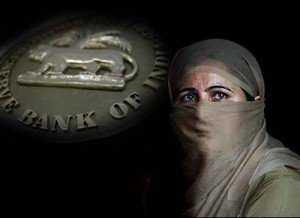I was eagerly waiting for this year’s union budget after the dismal performance of UPA II -encapsulated with scams and scandals. But “women centric” budget is like thinking out of the box and it completely took me with surprise. Will it be the last dice thrown by Finance Minister before the next year general elections or will it generate more women entrepreneurs in future? Let us analyze it in detail.
There are positives as well as negatives by opening a women-oriented public sector bank (PSB) with an initial capital infusion of Rs 1,000 crore. How much such a move will create an impact in terms of “women empowerment” and “financial inclusion” is yet to be seen.
Women customers will certainly feel comfortable on being serviced by women bankers. Penetration of such banks in rural areas will encourage more women participation and SHGs in availing microfinance. There will be a sense of freedom among the women in starting their own ventures. But the question that arise here are hard to deal with like “Will this bank for women serve the entire country? If yes, how long will it take to roll out across the length and breadth of India? Will it go to the hinterlands, where bulk of our women live? What is that “factor” which will make it work even when nationalized banks and micro-credit institutions are struggling to “include” people at scale in rural areas?
In the era of online and mobile banking, people hardly bother to visit banks. So opening up women banks will require a huge investment and infrastructure to be built. Such banks will be more profitable and will be able to generate more business in rural areas. Many microfinance institutions have opposed this move but I think it’s a positive move for poor women entrepreneurs of society who borrow money from private money lenders to run their business. Addressing the gender related aspects of empowerment; it will certainly fulfil a social goal. A women run bank is likely to attract women clients, promoting inclusive financing and other women livelihood schemes.
But do we need to start something new like this in a country where there are 26 nationalized banks, 21 private sector banks, 34 foreign banks and numerous cooperative and local banks? Such moves create a serious doubt on our own available resources. A similar banking model was started in Pakistan 14 years back in the name of “First Women Bank” but didn’t go a long way. It has currently only 38 branches all over and the work culture is corporate.
Let us witness the success story of India Post which through its infrastructure and network has implemented the plan into action. It has more than 1.54 lakhs post office branches out of which 90% are in rural areas. Each post office has been providing banking services for decades to people like Post Office Savings Bank. People who grew up in rural areas without banks, or in places where petty bankers were too strict to entertain the illiterate villagers, know where to go for the safe-keep of their precious money: that little window at their neighbourhood post office.
It’s not a long trek to the post office. There is a post office for every 7176 people in the country. In rural areas, the coverage is even better – one for every 5682 people. When the UPA government was struggling to find a way to transfer the wages for NREGA beneficiaries, it was this network that came to its rescue. About 2.2 crore people get their NREGA payments through the post offices. People in rural and semi-urban areas who are familiar with the post office savings banks also know that it is the most women-friendly and inclusive banking system where agents even come home to take your money, update your passbooks and even return the money on maturation. In rural areas, there are about 2.69 lakh agents who come home to help people, mostly women, with banking. Almost all these agents are also people from the neighbourhood and are familiar with the beneficiaries. It is a unique banking eco-system that only Indian Post can claim credit for. It is a model that has evolved over time and is very hard to replicate because it is driven by the sheer needs of people, and nourished by trust and relationships.
It will be difficult to establish another system like India Post with such network and coverage anywhere in the world. Currently post offices provide only savings facilities. India Post has decided to set up Post Bank of India and is all ready to apply for banking license by July under new RBI guidelines to operate as complete banking system.
P. Chidambaram would have been more prudent in utilizing this network to provide financial services to women at minimal cost. It will take many decades to establish numerous women banks all over India. Will it employ women agents to provide door to door service to women? What kind of banking guidelines will it follow?
There are many questions which have been left unanswered. Last time they lured farmers by announcing a relief package for farmers which included the complete waiver of loans given to small and marginal farmers.Referred as the Agricultural Debt Waiver and Debt Relief Scheme, the 600 billion rupee package included the total value of the loans to be waived for 30 million small and marginal farmers (estimated at 500 billion rupees) and a One Time Settlement scheme (OTS) for another 10 million farmers (estimated at 100 billion rupees).
This time its the women who may fall prey into UPA’s scheme. I have a deep regard for poor women and I truly believe in saying that “They are Bankable”.
[The article has been written by Rohit Ranjan. He has completed his MBA in Agribusiness from Symbiosis Institute of International Business,Pune and loves quizzing, writing and reading.]

































